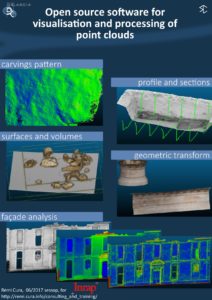
Oslandia offers training in multiple domains, especially 3D-related GIS trainings. A few weeks ago we gave a training on open source tools for point cloud visualization and processing for INRAP (The French National Institute of Preventative Archaeological Researches). This formation is heavily tailored to match the needs of the attendants, so the first step was to understand those needs, and present OpenSource solutions to fulfill the demand. Rémi Cura, who was the trainer for this session, shows what has been studied during this session.
Background about preventive archeology
Archeology is fascinating in many aspects. From a data perspective, it combines great care when digging and analyzing artifacts (sometimes finishing with a brush) along with vast amount of unknown and guesses regarding the exact historical situation. And of course the fact that there is no way to go back in time to actually be sure of the historical reality is both very frustrating and very challenging.
Somehow the preventive archeology is even tougher, because it is constrained to a very short period of time before the infrastructure is built. So when for instance a building will be built at a place, the archeologist have a few weeks to excavate and document what they can, then the building foundations are laid, and the archaeological excavations are sealed.
So the challenge is to document in the very short period of time the excavation. To this end, point clouds (from photogrammetry and Lidar) are precious.
The training
Oslandia organized a training for INRAP, and the session has been given by Remi Cura.
Several weeks before the training, we asked the future attendees to gather actual datasets so they could train on their own data. We can offer to work on many types of data, but it is more interesting and meaningful for the attendee to use data they can relate to. We also like to ascertain the technical profiles and needs of the attendees, so the content can be tailored to their needs and skills. In this case, the archeologist had good GIS software experience, no programming background, and were very motivated.
The actual training starts with a theoretical talk about point clouds. Point clouds may seem stupidly simple (OK: a set of 3D points!), but behind the scene a number of complex theories are at work (information theory, sampling theory, perception, etc.).
We then introduce the major open source tools for point cloud :
- CloudCompare, the Swiss army knife of point cloud
- Meshlab the way to build mesh and surfaces from points
- PDAL the universal IO tool
- PCL, the powerful C++ point cloud library.
In this particular setting, we estimated that the attendees needed a large focus on CloudCompare, as it is a good way to introduce most of the point cloud operations that can then be scripted (or programmed) through PDAL or PCL.
The basics are first covered : loading, manipulating and visualizing a point cloud.
The points geometry may be manipulated to help exploiting the content. For example unrolling the points of a gravestone may help examine the inscribed message.
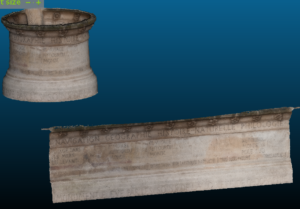
One of the key ability to analyze a point cloud is to be able to adapt the visualization to highlight something of interest.
For instance that may be the case for an analysis of an historical front of a building. In the example, we try to emphasize the front structure and the level of wear (cracks).

Another more subtle example is to try to show the carving on a several meters stone.
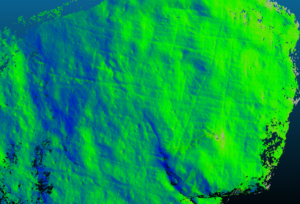
There are dozen of tools that the trainee test and learn to use.
Most importantly, these tools can be combined to obtain complex information.
For instance surface reconstruction and volume estimation for this example of excavation with antique objects.
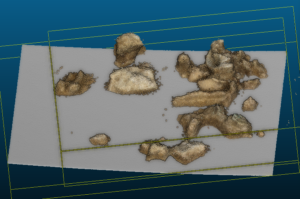
Last, it seems that profiles are especially important for archaeological analysis. Combined with adequate illumination and lighting in this example.
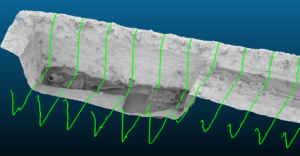
The 3 days training covers much more, but the essential part is actually practicing a lot and understanding rather than applying.
Dr. Rémi Cura for Oslandia ( http://remi.cura.info/ )
Should you be interested in our training offer, do not hesitate to contact us at formation@oslandia.com

